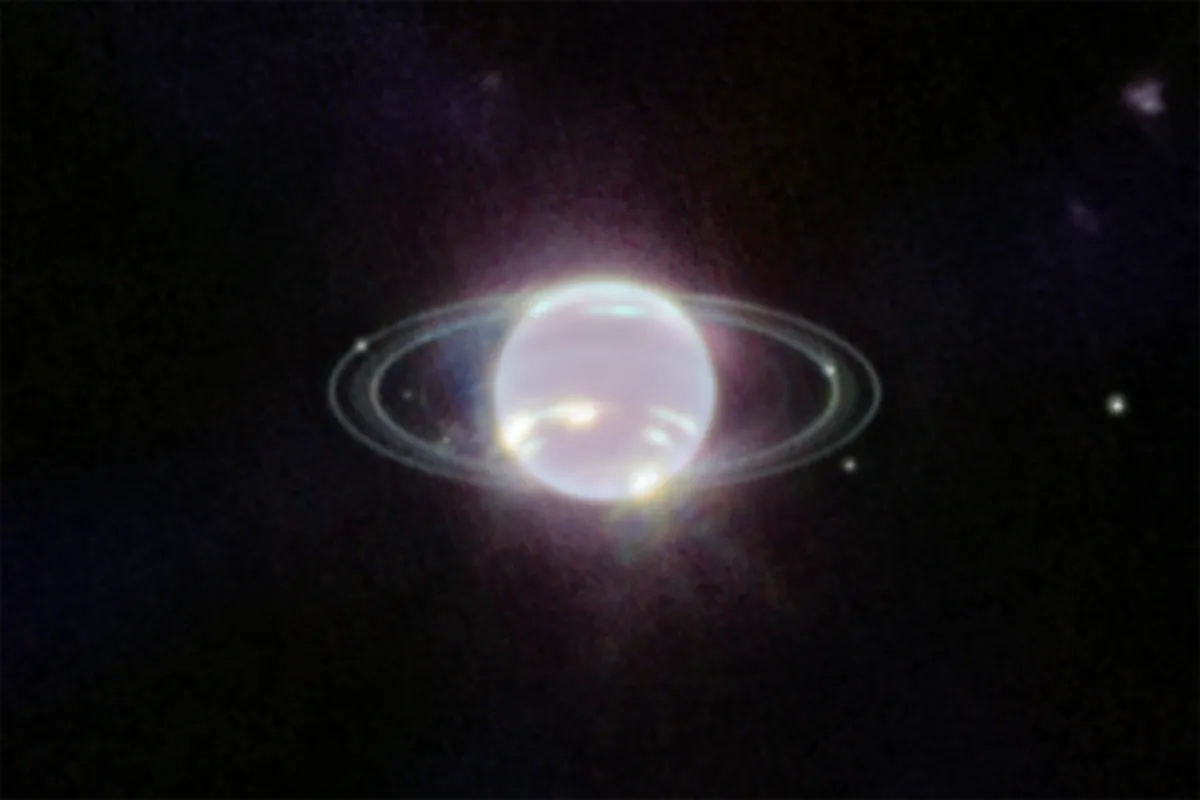The James Webb Space Telescope has detected what could be the first ever population of brown dwarfs found beyond the Milky Way.
The brown dwarf candidates were found by Webb in star cluster NGC 602 near the Small Magellanic Cloud, a satellite galaxy 200,000 lightyears away.
More amazing Webb observations

Brown dwarfs are often termed 'failed stars' because they are enormous gas giants that didn't quite accumulate enough mass to become fully fledged stars.
They're often referred to as 'sub-stellar' objects, and they are free-floating, which means they're not orbiting a host star the way planets are.
Webb, NGC 602 and the brown dwarf candidates
An international team of astronomers used Webb to detect the brown dwarf candidates in NGC 602.
They say star cluster NGC 602 is a close analogue of the conditions of the early Universe, with a low abundance of elements heavier than hydrogen and helium.
Dark clouds of dense dust, along with a rich supply of ionised gas, suggest star formation is ongoing in this region, making it a good place to study star-forming conditions.
And, luckily for us, the study also produced a new image of NGC 602.
This image shows the cluster stars, the brown dwarf candidates and the cosmic gas and dust.

What the team say
"Only with the incredible sensitivity and spatial resolution in the correct wavelength regime is it possible to detect these objects at such great distances,” says study lead author Peter Zeidler of AURA/STScI for the European Space Agency.
"This has never been possible before and also will remain impossible from the ground for the foreseeable future."
"Until now, we’ve known of about 3,000 brown dwarfs, but they all live inside our own galaxy," says team member Elena Manjavacas of AURA/STScI for the European Space Agency.
"This discovery highlights the power of using both Hubble and Webb to study young stellar clusters," says Antonella Nota, executive director of the International Space Science Institute in Switzerland and the previous Webb Project Scientist for ESA.
"Hubble showed that NGC602 harbors very young low mass stars, but only with Webb we can finally see the extent and the significance of the substellar mass formation in this cluster. Hubble and Webb are an amazingly powerful telescope duo!"
"Our results fit very well with the theory that the mass distribution of bodies below the hydrogen burning limit is simply a continuation of the stellar distribution," says Zeidler.
"It seems they form in the same way, they just don’t accrete enough mass to become a fully fledged star."
"By studying the young metal-poor brown dwarfs newly discovered in NGC602, we are getting closer to unlocking the secrets of how stars and planets formed in the harsh conditions of the early Universe," says team member Elena Sabbi of NSF's NOIRLab, the University of Arizona, and the Space Telescope Science Institute.
"These are the first substellar objects outside the Milky Way” added Manjavacas. “We need to be ready for new ground-breaking discoveries in these new objects!"
Read the full paper on Webb, NGC 602 and the brown dwarf candidates at iopscience.iop.org/article/10.3847/1538-4357/ad779e

